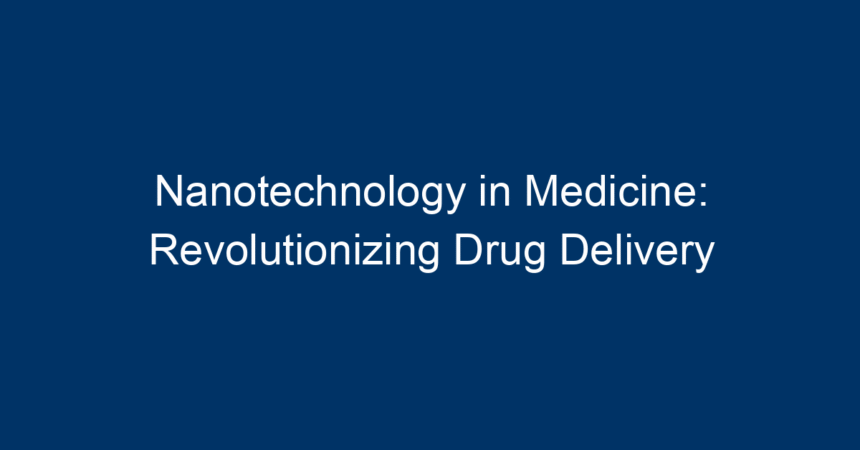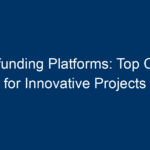Introduction
In the last few decades, nanotechnology in medicine has emerged as a groundbreaking field, reshaping how we understand and administer treatments. Imagine a world where drugs can be delivered directly to the affected cells, minimizing side effects and maximizing efficacy. This is not a distant dream but a reality being paved by innovations in nanotechnology. By manipulating matter on a molecular scale, scientists and medical professionals are discovering new ways to enhance drug delivery, allowing for more targeted therapies and healthier patients. This article delves into the transformative role of nanotechnology in medicine, particularly in revolutionizing drug delivery systems.
What is Nanotechnology?
Before diving into its applications in medicine, it is crucial to understand what nanotechnology entails. At its core, nanotechnology involves the manipulation of materials at the nanoscale—roughly 1 to 100 nanometers. This tiny scale is essential because materials often exhibit unique physical and chemical properties, which can differ significantly from their larger counterparts.
The Basics of Nanotechnology
- Nanoscale Materials: These materials can include nanoparticles, nanofibers, and quantum dots. Each of these has specific properties that can be utilized in various applications.
- Unique Properties: Nanomaterials can offer enhanced strength, lighter weight, increased chemical reactivity, and electrical conductivity, making them ideal for medical applications.
The Need for Advanced Drug Delivery Systems
Traditional drug delivery methods come with several drawbacks, including poor bioavailability and numerous side effects. Drugs often do not reach their intended target due to barriers posed by biological systems. This challenge necessitates the development of advanced drug delivery systems that can ensure precise targeting and effective dosing.
Issues with Conventional Drug Delivery
- Systemic Distribution: Traditional methods often lead to non-specific distribution of drugs; hence, some healthy tissues might absorb the medication, resulting in adverse effects.
- Limited Solubility: Many drugs have poor solubility, which can limit their effectiveness and lead to higher dosages.
- Rapid Clearance: The body often clears drugs too quickly, limiting their therapeutic potential.
How Nanotechnology is Changing Drug Delivery
Nanotechnology in medicine can address several challenges associated with traditional drug delivery. Here’s how:
Targeted Delivery
Targeted drug delivery systems utilize nanoparticles to deliver drugs directly to the site of action, thereby enhancing drug efficacy while minimizing side effects. This approach can significantly improve treatment outcomes in diseases such as cancer.
- Smart Nanoparticles: These particles can be engineered to respond to specific stimuli, such as pH changes or temperature fluctuations in the target area, releasing their payload only when needed.
Controlled Release Mechanisms
Nanotechnology enables controlled release mechanisms. This can ensure a steady release of drugs over time, which is particularly beneficial for chronic conditions requiring long-term treatment.
- Sustained Release: Nanocarriers can be designed to deliver drugs over extended periods, reducing the need for frequent dosing and enhancing patient compliance.
Enhanced Bioavailability
Nanoparticles can improve the bioavailability of poorly soluble drugs by increasing their surface area, leading to improved absorption rates.
- Improved Solubility: Through the formulation of drugs into nanoparticles, their solubility can be significantly enhanced, making it easier for the body to utilize them effectively.
Types of Nanoparticles Used in Drug Delivery
Several types of nanoparticles have been developed for drug delivery in medicine, each with its own advantages and applications:
Liposomes
Liposomes are spherical vesicles that can encapsulate drug molecules. They are biocompatible and can enhance the delivery of both hydrophilic and hydrophobic drugs.
Dendrimers
Dendrimers are branched, tree-like structures that can be functionalized with various agents. Their unique surface properties allow for targeted drug delivery, especially in cancer therapy.
Nanoparticles
Various nanoparticle formulations (like silica nanoparticles and gold nanoparticles) are extensively studied for their ability to deliver drugs effectively while minimizing toxic side effects.
Case Studies and Success Stories
Cancer Treatment
One of the most forward-moving applications of nanotechnology in medicine is in cancer treatment. Various nanoparticles are being used in clinical trials to deliver chemotherapy drugs directly to tumors, reducing collateral damage to surrounding healthy tissues.
Diabetes Management
Another promising application involves the use of nanoparticles for insulin delivery. Traditional insulin injections can be painful and inconvenient. Nanotechnology offers alternatives that could allow for more effective and less invasive insulin delivery.
Challenges in Implementing Nanotechnology in Medicine
While the prospects are exciting, several challenges still impede the widespread adoption of nanotechnology in drug delivery.
Regulatory Hurdles
The regulatory landscape for nanomedicines is complex and often unclear. Navigating through the numerous regulations can delay the development and approval of new therapies.
Manufacturing and Scalability
Producing nanoparticles in large quantities with consistent quality is a significant challenge. Advanced manufacturing techniques need to be developed to meet the demands of clinical settings.
Public Perception and Ethical Concerns
Public apprehension regarding the safety of nanomedicines can hinder acceptance. Education and transparent communication are essential to foster trust.
Future Directions in Nanotechnology for Drug Delivery
As research continues and technology advances, the future of nanotechnology in medicine appears promising. Potential avenues for development include:
Combination Therapies
Research is ongoing to create nanocarriers that can deliver multiple drugs simultaneously. This could be especially beneficial in treating complex diseases where multifaceted approaches are required.
Personalized Medicine
Nanotechnology holds promise in developing personalized medicine strategies, allowing for tailored therapies that match the unique profile of an individual’s disease.
Gene Therapy
The integration of nanotechnology with gene therapy presents exciting possibilities, enabling the efficient delivery of genetic material to target cells.
Conclusion: The Future is Bright
Nanotechnology in medicine is not just reshaping drug delivery; it is paving the way for a new era in treatment approaches. By offering targeted, efficient, and personalized therapies, it’s enhancing the quality of care and improving outcomes for patients. As we continue to overcome existing challenges—such as regulatory issues and manufacturing constraints—the potential for nanotechnology to make a substantial impact in the field of medicine remains vast.
Actionable Insights
-
Stay Informed: Keep abreast of the latest research and developments in nanotechnology in medicine to understand its evolving landscape.
-
Advocate for Education: Support initiatives that promote educational efforts around the benefits and safety of nanotechnology in medical applications to combat public skepticism.
-
Explore Clinical Trials: Consider participating in clinical trials if eligible, as they often involve cutting-edge treatments utilizing nanotechnology.
- Consult Health Professionals: For patients dealing with chronic conditions, discussing advanced treatment options with healthcare providers may open up new avenues for effective management using nanotechnology.
With ongoing innovations and research efforts, the future of drug delivery through nanotechnology in medicine is set to revolutionize our approach to disease treatment and management.




